Reviews |
|
LONDON Barbican Milton Court
Seen and Heard International
by Mark Berry, February 11, 2019
Fine Pianism and a Fascinatingly Diverse Programme from Jean-Efflam Bavouzet
Haydn – Piano Sonata in E-flat major No.49 Hob. XVI/49
Schumann – Piano Sonata No.3 in F minor Op.14
Boulez – Twelve Notations
Ravel – Jeux d’eau; Miroirs: ‘Une barque sur l’océan’ and ‘Alborada del gracioso’
Prokofiev – Piano Sonata No.3 in A minor Op.28
Any half-decent performance including works by Haydn and Boulez will prove a success. This Wigmore Hall recital from Jean-Efflam Bavouzet was no exception and was rather more than half-decent. If I am unsure that I discerned a guiding thread in the programming, the ear and mind in any case always make their own connections; mine certainly did so here.
Haydn’s late-ish (1790) E-flat major Sonata, Hob. XVI/49 (not to be confused with that of four years later) retained some of the composer’s early quirkiness under Bavouzet’s hands: not in a self-conscious way, but seemingly through letting notes, phrases, paragraphs speak for themselves. (That may be an illusion, but more often than not, it is a necessary illusion.) A fastish yet flexible tempo for the first movement probably helped in that respect; this was a living, breathing performance, not Haydn as a classical or classicising monument. The first repeat – Bavouzet took both – was anything but a mere ‘repeat’; reinvented in the light of experience, the music sounded closer to a first development. The counterpoint of the development proper spoke clearly, beautifully of Haydn’s recent interest in Bach – until, of course, the writing changed. Whatever the discontinuities, they were, as in Beethoven (and Bavouzet’s Beethoven) predicated on and communicated with a sense of underlying continuity. One experienced rather than simply heard – or knew – different elements of construction, above all motivic. A grand, passionate, not un-Beethovenian Adagio e cantabile followed: Romantic without anachronism, close to Beethoven because Beethoven stands so close to Haydn. Bavouzet showed himself equally alert to the vocalism of the right hand part and to what ensures that this is unquestionably keyboard music. The third and final movement was boldly sculpted, anticipations of Schubert relished without exaggeration. Again, whatever the illusions and delusions of the claim, the sense was of Haydn’s score speaking for itself – quite without pedantry, very much in the momentThere was, by contrast, rightly an element of Romantic classicism to Bavouzet’s Schumann sonata (mostly given in its 1853 revision, but with a few elements retained from the first, 1836 edition). The sound – not just the Yamaha’s sonority, but harmony, attack, everything that combines in our eyes and ears – was indefinably Schumann’s from the outset: a very different world from Haydn’s, even if not so distant chronologically. How much changed so quickly during this time! The first movement, as elsewhere, showed no want of flexibility, but structure sounded more given – a nineteenth-century ‘received’ sonata form – than created. Such was the challenge of writing in such forms after Beethoven – or, for that matter, Haydn. Technical virtuosity required was of a different order too, not that that was any problem for Bavouzet. In the scherzo, rhythms were nicely sprung, vehicles of harmonic motion that rightly placed us somewhere between Mendelssohn and Brahms. This may not present Schumann at his most fantastical, but there was still a keen element of that quality: winning and highly convincing, in a work often thought problematical. The third movement variations flowed like a wayward, yet ultimately directed river, their transformations surprising yet never arbitrary. Of all four movements, the finale stands most clearly in the line of the original publication title (in three-movement form), ‘Concert sans orchestre’. It certainly sounded so here; indeed, one might have been forgiven for suspecting three hands at work, two for orchestra, another – or should that be another two? – for solo instrument. Once more, virtuosity unleashed a flow of unmistakeably Romantic poetry.
After the interval came Notations, treated to a spoken introduction by the pianist, who had worked with Boulez both on this work and others. (I recall hearing him give three of these twelve-by-twelve jewels as an encore to the three final Beethoven sonatas, shortly after Boulez’s death in January 2016.) An impression of thinking and rethinking, of taking no mere ‘tradition’ for granted – very much, be it noted, in Boulez’s own line, or day I say, tradition – was once again present. The first piece was full of contrast, yet perhaps warmer than expected; the second and other toccata-like pieces dazzled with all the éclat one could imagine – and then some. Bavouzet clearly relished Boulez’s craftsmanship and pent-up, post-expressionist emotion alike. For there was inwardness too, as in the third and fifth pieces; in the former, I even cast an aural glance back to the Bachian counterpoint of the Haydn first movement, heard as if through a Debussyan gauze. Number play was vividly communicated; so too was a highly-developed – even at this age – sense of instrumental theatre, especially at the close.
Three pieces by Ravel followed. The opening figures of Jeux d’eaux seemed to emerge, even if they did not, from Boulez. Voicing was exquisite yet purposeful – never a mere diversion in itself – both here and in the two pieces from Miroirs. ‘Une barque sur l’océan’ sounded related to the former piece yet whereas in that, we were the beholders of a static scene, the water glistening according to the sun, now one sensed movement – of that boat – upon the waters. Post-Lisztian virtuosity effected a volatility subtler than that required for Gaspard de la nuit, yet no less for that. ‘Alborada del gracioso’ was taken quite without indulgence, its hauteur suggestive of the lands south of the Basque country, whatever the provenance of composer and pianist. It was precise, yes, but meaning lay in that precision and in its unspoken connections and connotations.
Integrative and disintegrative qualities were held in equal account in the closing performance of Prokofiev’s Third Piano Sonata. In context, it sounded as if risen from the ashes of the music heard earlier in the evening as much as from Liszt and Scriabin, though their presence was also undeniable. Diabolicism suggested the Fiery Angel to come. Side-slipping melodies rose from the material when least expected, yet with an inevitability in retrospect that brooked no dissent to their often surprisingly ‘white’, diatonic twists and turns. Virtuosity was again a necessity as starting point, but only as that. Here was to be experienced a stream of consciousness in the proper, modernist sense, inexplicably (as yet) coherent.
|
|
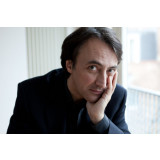 |
BIRMINGHAM Symphony Hall
Bachtrack by Simon Cummings
May 10, 2018
Removing barriers, provoking questions: Kazushi Ono, Jean-Efflam Bavouzet and the CBSO
It took a while to realise that the CBSO’s performance of Bartók’s Piano Concerto no. 1, with Jean-Efflam Bavouzet at the helm, was utterly perfect. Having wisely positioned the percussion and timpani on either side of the piano at the front of the stage – highlighting the “triple concerto” nature of the work – we were immediately plunged into the discombobulating weirdness of its soundworld, Ono’s hands twirling in circles as though the orchestra were a spinning top, Bavouzet seemingly indulging a stream of consciousness, improvising and vamping at the keyboard. But then the penny dropped. We generally associate the term “experimental” with music of the last 70-or-so years, yet what we were experiencing here was a transparent reminder of how much it applies to earlier music. The Symphony Hall stage had became a laboratory within which Bartók’s marvellously weird experiment played out. And not with much caution either: ideas presented on a whim, toyed with for a while and abruptly cast aside; the role of soloist inverted, often reduced to banging out motifs in the lowest register of the instrument; recklessly moving back and forth between subdued, even stupefied material and wild, entirely unexpected outbursts."
|
|
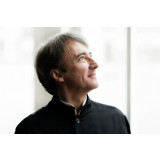 |
Pour le piano: Jean-Efflam Bavouzet commemorates Debussy at Milton Court
***** Bachtrack
by Roy Westbrook, March 26, 2018
One hundred years to the day since Debussy died “Pour le piano” was a nearly day-long exploration of his piano music. Jean-Efflam Bavouzet offered three recitals interwoven with scene setting discussions with the eminent scholar of French music of the era, Roger Nichols. But Nichols was unwell, and was replaced at very short notice by Barbican classical music programmer Paul Keane. He in turn had the great sense simply to ‘interview’ Bavouzet, mostly tossing the pianist an intelligent cue to set him off reflecting on his compatriot’s epoch-defining art. Which Bavouzet duly did with charm, wit and insight, occasionally putting down the microphone to illustrate a point at the keyboard. The only ghost of the planned approach were the slides shown during these interviews, all of the composer at periods contemporary with the music being discussed, but which went unremarked throughout.In Part One, Bavouzet focussed on the earlier piano works in which Debussy was finding his voice, such as the Ballade or Tarantelle. This provided the opportunity for an amusing game of influence-hunting, whether in the direction of the Russians (in the 7/4 passage in the 1892 Nocturne), Erik Satie, or, inevitably, Richard Wagner – later Bavouzet had great fun pointing out at the keyboard the various occasions when Debussy teasingly invoked or rewrote the opening of Tristan. Even the ubiquitous Clair de lune, played with beguiling simplicity, became fresh again in this context.
And we had a delightfully related reminiscence from Bavouzet’s long association with Pierre Boulez, to the effect that the Arabesque no.1, of all pieces, was a particular Boulez favourite. But if that piece evoked the salon, we ended firmly in the concert hall. This first part culminated in L’Isle joyeuse, which Bavouzet descried as a “concert piece, because the audience knows when to clap” (unlike the many works which evaporate quietly). It was played with great flair, and real spontaneity in the warm rubato with which the central melody stole in. If there was some slightly splashy playing in the final pages (and in what live performance is there not?), this was because of the excitingly swift tempo, and the ecstatic, all flags flying manner of the climax – joyeuse indeed.
Part Two opened with the first book of Images, of which the first (Reflets dans l’eau) is one of the most evocative of Debussy’s water pieces. Bavouzet has a sublime touch for the deliquescent manner of passages such as the opening of this Image, which rippled seamlessly. But he also emphasised – once more in discussion and then in playing – the huge dynamic range in Debussy’s piano music. The close of Hommage à Rameau is, we learned, the only occurrence in all Debussy’s music of a pppp marking. Fortunately the splendid and well-prepared piano and the Milton Court Hall acoustic (both praised by Bavouzet) allowed us actually to hear such nuances. Bavouzet recalled that when Debussy heard the aged Liszt play, he was amazed at the quality of his soft playing, then quoted a contemporary critic of Debussy’s playing, “a good pianist but no-one beyond the fifth row will hear him”.
Certainly the selection from Book One of the Préludes showed Bavouzet’s dynamic range. In La Cathédrale engloutie the muffled bells tolled very softly but the central climax swelled with an organ-like volume, while in Ce qu’à vu le vent d’Ouest Bavouzet became a French Prospero, conjuring terrifying tempests from the keyboard. The Études closed this second part of the day, and Bavouzet had much fun in No.1, Pour les cinq doigts, impersonating a bored pupil suffering five-finger exercises and relieving the tedium by adding incongruous notes. (Debussy and humour was the subject of another disquisition). The pianist made light of the technical difficulties because as he said “they are so short”. Even shorter when taken at some of Bavouzet’s tempi, but he still rose to the demands of each one in this generous selection.
Selection is distortion though when it comes to the Préludes since Debussy took such pains over the sequence of them, so for Part Three we had the whole of Book Two, preceded by a discussion but thereafter uninterrupted. In La puerta del vino, Bavouzet relished the composer’s injunction to juxtapose “extreme violence and passionate tenderness” and in Les fées sont d’exquises danseuses he controlled the long trills like some pirouetting fairy. La terrasse des audiences du clair de lune was as mysterious as its title, and Feux d’artifice was a dazzling pianistic fireworks display. We heard spectacular playing throughout the day, but with the whole unbroken sequence of this book of Préludes our musical engagement was sustained and cumulative, making a brilliant conclusion to our Hommage. What a great composer, and what a great advocate for his genius.
|
|
|
Jean-Efflam Bavouzet plays Debussy at Milton Court
The Telegraph ★★★★☆
by John Allison , 31 March 2018
Of the big Debussy commemorations marking the centenary of his death, none has seemed more fitting this this: Jean-Efflam Bavouzet’s marathon run through his piano music at Milton Court on Sunday, exactly one hundred years to the day since the composer died. Though not aiming to be a complete survey — Bavouzet has recorded the full Debussy output anyway — this triple-decker programme provided a magnificent overview of the long musical journey Debussy made in a relatively short number of years before cancer killed him, aged 55, as World War I drew towards its end.
Several of the early pieces from around 1890, which is where Bavouzet began his exploration, bear testimony to the influence of Russian music some two decades before the Ballets Russes revolutionised the Paris ballet scene. The Ballade Slave may be a conventional work, but Bavouzet found plenty to fascinate in its rippling textures — clear up to a point, but retaining a sense of mystery. The Tarantelle Styrienne had glittering power. Despite a very physical connection to the keyboard, Bavouzet’s playing was consistently poised; even as Debussy’s style changed, he showed how intensity and precision are the constant keys to its mastery.
Another obvious influence on Debussy is that of Chopin, not least in the collections of Preludes and Etudes composed by Debussy at the height of his powers. Other Chopinesque forms received a glance early on (a Ballade, a Nocturne and even a Mazurka), but Debussy’s own often enigmatic titles started to emerge too. Bavouzet projected the Arabesque No. 1 on gentle waves of sound, and supplied nonchalant virtuosity in the third of the Images oubliees. In his lively and illuminating chat from the stage, Bavouzet confessed to often finding Debussy hard to pin down, and even the climaxes difficult to identify — though that was not a problem in the extrovert brilliance of L’isle joyeuse.
Within a few years of all this, Debussy was writing modern music while never being a self-conscious modernist. Observing that “too much beauty might kill beauty”, Bavouzet filleted the first book of the Preludes as well as the Etudes, and played only the first series of Images, but gave us the complete second book of Preludes in order to show Debussy at his most concentrated. From the floating haze of Brouillards and the muscular Spanish flavour of La puerta del vino, he created an atmosphere of enchantment and quirkiness before celebrating the end of the journey with a Feux d’artifice that was aptly full of colour and fire.
|
|
|
L’après-midi d’un pianiste: Jean-Efflam Bavouzet plays Debussy in Perth Australia
***** Bachtrack
by Sandra Bowdler, February 26, 2018
A four-hour afternoon concert of one man playing piano music by Debussy was not a sufficiently daunting prospect to deter a full house. Indeed, time seemed to fleet by, and it was not quite as concentrated as that might sound. Jean-Efflam Bavouzet not only engaged and entertained from the piano, but did so through a charming flow of informative comment to the audience on all things pertaining to the works performed and their composer. Debussy’s piano pieces are mostly very short, but they are extremely varied in tone, mood, and colour, and there were two intervals to gather one’s thoughts and responses. Bavouzet himself showed remarkable stamina, seeming as fresh at the end as at the start, and never once resorting to a page of music.The program was organised more or less chronologically, from early works to later masterpieces. Beginning with the Ballade of 1891, perhaps more obviously melodic than some of the later works, this was played gently but not quietly, the rippling effect looking forward to the perhaps more impressionistic works relating to the movements of wind and water. One noted here the delicate and necessary control of the dynamics, also quickly apparent in the next piece, the Nocturne (1892), with its alternating increasing and decreasing intensity. The contemporary Tarantelle styrienne hints at more modern ideas, with its excitingly rendered wild dance moves.
The next bracket comprised Arabesque no. 1, Images oubliées, Clair de lune and L'isle joyeuse, bringing us into the 20th century. Here one can single out Quelques aspects de “Nous n’irons plus au bois” parce qil fait un temps insupportable, very nimble and playful, with a ferocious bell tolling at the end. The ever-familiar Clair de lune was completely transporting, played with refined transparency. L’isle joyeuse, believed to allude to a painting by Watteau, was composed while Debussy was on a sort of pre-honeymoon with his future wife, and was played with rollicking good humour but with notes of longing and passion; at the end, Bavouzet finished the final arpeggio by spinning off his stool and on to his feet to receive warm applause.
After the first interval, the next session included Images Book I, Préludes Book I (three selections), and selections from the Études of 1915. Bavouzet introduced this section by suggesting that here we move into the realm of masterpieces: now the piano becomes like an orchestra, with deeper layers. Having earlier talked about Debussy “escaping” from Wagner, here he described him as “escaping gravity – taking Tristan up the nose”, and acting out this image with finally flinging Tristan into space
The Images included a very slow but involving Hommage à Rameau (I am still trying to identify what theme of Rameau’s is involved – it is said to be inspired by Castor et Pollux), followed by the contrastingly louder and faster Mouvement. The items from Préludes Book 1 (1907-10) comprised two big hits, La Fille aux cheveux de lin and La Cathedrale engloutie along with Ce qu’a vu le vent d’ouest. The first was described by Bavouzet as “simple”, but with an undertow of irony in his voice. The wonderful imagery of the drowned cathedral was perfectly conveyed, with its loud and smaller bells.
As Bavouzet had also pointed out, it would be a mistake to take the Études as mere exercises, but one suspects that anyone who every played them (and one would also expect that a lot of piano players of one sort or another were in the audience) would know. The first, Pour les cinq doits d’après Monsieur Czerny was performed very playfully, provoking loud laughs. Pour les tierces produced a very dramatic hand flourish at its powerful conclusion, contrasting with the gentle end of Pour les sixtes. Pour les degré chromatiques displayed some very nifty fingering, and Pour les sonorités opposes (described by Bavouzet as the most important if wrongly titled), where the “trumpet theme” did indeed almost brassily ring out. The final Pour les octaves, with its rolling arpeggios and accelerating finale led into even warmer applause before the second interval.
All twelve Préludes of Book 2 comprised the final section of the program. Bavouzet sailed through without a hint of fatigue, bringing out the many moods and textures, the somewhat abstract depictions of Brouillards and Bruyères, the habanera rhythm of La Puerta del Vino, the cakewalk of Général Lavine (eccentric), the rippling water of Ondine, the (deliberately) heavy handed rendition of God Save the King/Queen in the Hommage à S. Pickwick Esq. and its more playful side, and the pianistic fireworks of Feux d’artifice concluding the event. A standing ovation ensued.
|
|
 |
DETROIT Orchestra Hall
Detroit Symphony Orchestra French Festival – 1/6: Leonard Slatkin conducts Ravel with Jean-Efflam Bavouzet playing both Piano Concertos [live webcast]
ClassicalSource
Reviewed by Colin Anderson, February 09, 2018
The latest DSO winter festival – three weeks, six programmes, twelve concerts, much more – concerns musical matters à la française.
...For all that Ravel’s two Piano Concertos are contemporaneous, they could not be more different. The G-major is light and jazzy if with recesses into a more-interior world, whereas the Left-hand is dark and disturbing. Jean-Efflam BAVOUZET has rather monopolised both and also recorded them (for Chandos). He was in top form, and enjoyed a snazzy and sensitive accompaniment for the legerdemain and poetic asides of the G-major’s first movement, then found poignant intimacy for the Fauré-like slow movement in which the woodwind and – including an unforgettable nudging accent – string contributions were sublime. The Gershwin-esque Finale came off brilliantly, a little less hectic than it can be, to advantage, to crown a performance that was often more than a divertissement. Unusually, if effectively, Bavouzet now played an encore, ‘Feux d’artifice’, the last of Debussy’s twenty-four Préludes; the night sky was lit up before the music evaporated to something ghostly.
Following the interval Bavouzet returned for the great masterpiece that is the Left-hand Concerto, the pianist’s right-hand now “on holiday”. Composed for Paul Wittgenstein, who had lost his right-arm when serving in the Austrian army during World War One, the Concerto is a technical challenge for any pianist, so much to encompass with just five digits. Bavouzet continued his pristine playing, enquiring within the music’s declamation, rumination, macabre march, escapes to Mother Goose land, and the all-encompassing cadenza, backed to the hilt by a detailed and defined DSO...
Cinq étoiles then.
|
|
|
AMSTERDAM CONCERTGEBOUW
BACHTRACK
By Michael Klier, 22 January 2018
...Das Erste Klavierkonzert von Béla Bartók hatte in Sachen Dramatik und Linienführung schon wesentlich mehr zu bieten. Dies war sicher auch zu großen Teilen dem Solisten Jean-Efflam Bavouzet zu danken, der mit herrlich entspannter Gestik und prägnantem Anschlag begeisterte. Auch hier überzeugte die Cellogruppe mit klarem Ton, doch noch auffallender war die jetzt vorzügliche dynamische Differenzierung im gesamten Orchester: über lange Crescendobögen und äußerste Pianissimopassagen kam Spannung auf. Der zweite Satz war ein Kammermusikereignis zwischen der Schlagzeuggruppe und dem Solisten. Auch wenn man sich rhythmisch nicht immer ganz einig war – was auch am großen Abstand zwischen Solist und Schlagzeugern gelegen haben mag – war dieses Andante der Höhepunkt vor der Pause, wozu auch die Bassklarinette im Mittelteil des dreiteiligen Satzes beitrug.Die kurzen Kadenzen im abschließenden Allegro molto spielte Bavouzet sehr abwechslungsreich und voller Energie. Das Orchester überzeugte mit präzisen Einsätzen, zum Beispiel beim Pizzikatoabschnitt, der von den Celli ausgehend die Streicher glänzen ließ. Gardner dirigierte eloquent mit kleinen runden Bewegungen und schaffte es, dass Bartóks Erstes Klavierkonzert mit dieser Interpretation trotz aller Klanggewalt und komplizierter Rhythmik eine wohltuende Ruhe ausstrahlte...
|
|
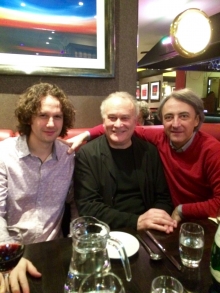 |
MANCHESTER Bridgewater Hall
A new mirror on Ravel, left hand virtuosity and subtle Shostakovich
THE ARTS DESK January 16, 2017 by Robert Beale
Bavouzet was thoroughly equal to its demands, the late-occurring cadenza in particular being both brilliantly and poetically played"
|
|
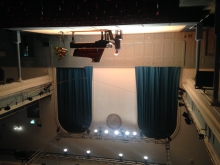 |
EDINBURGH Queen's Hall
Pure delight: Jean-Efflam Bavouzet in recital in Edinburgh *****
BACHTRACK Nov 24, 2016 by Julie Jozwiak
“La vallée des cloches” transported the audience elsewhere, to another world – maybe life after death, as Bavouzet suggested in his speech. This specific moment was literally breath-taking, a quasi-mystical meditation beyond the known."
|
|
|
LONDON Royal Festival Hall
François-Xavier Roth conducts Les Siècles at Royal Festival Hall,Jean-Efflam Bavouzet plays Ravel’s Left-hand Piano Concerto
CLASSICAL SOURCE Nov 2016 by Colin Anderson
"He played superbly and, following the mists of the beginning, with every orchestral strand opened out, and with an appealingly croaky contrabassoon solo, Bavouzet was in commanding form."
|
|
|
LONDON Royal Festival Hall
Captivating Debussy Ravel concert from Roth, Bavouzet and Les Siècles
SEEN and HEARD International Nov 7 2016 by Geoff Diggines
" Bavouzet initiated a savage survey of the piano’s nether regions setting out the principal themes with force and drama. Bavouzet made the single hand sound like two hands, as Ravel intended. In fact, although it will offend many, I found Bavouzet even more compelling than Wittgenstein, with no wrong notes!"
|
|
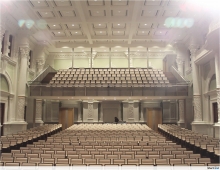 |
SINGAPORE International Piano Festival
Vivid rendition of Debussy and Ravel
THE STRAITS TIMES June 25 2016
by Mervin Beng
The second half, dedicated to works of French masters Ravel and Debussy, was a complete triumph."
|
|
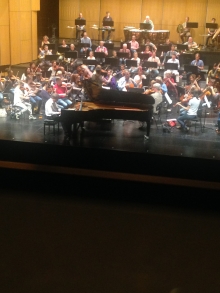 |
MAINZ
Immer gut für Überraschungen
ALLGEMEINE ZEITUNG May 18 2016
by Axel Zibulski
Kantig, klar, auch in turbulenten Zusammenhängen dominant arbeitete Bavouzet die 24 Variationen aus, die Rachmaninow über jenes Thema komponierte, das der Geigen-Hexenmeister Paganini seinerseits der dämonischen Solo-Caprice Nr. 24 zugrunde gelegt hatte."
|
|
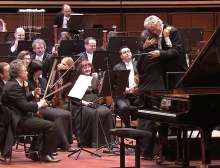 |
BUDAPEST Palace of the Arts
When to applaud?
REVIZOR March 28 2016, by Csabai Màtè
A második, Adagio assai tétel harminchárom ütemnyi zongoraszólóval indít, melyet Bavouzet nagy áhítattal játszott, szó bennszakadt, hang fennakadt, lehellet megszegett."
|
|
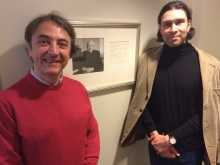 |
CLEVELAND
Cleveland Orchestra offers respite from winter in colorful, warm French program
THE PLAIN DEALER Febr 5, 2016 by Zachary Lewis
The pinnacle was the Adagio. Out of its touching solo theme, Bavouzet and orchestra crafted a lavish and ultimately hugely impassioned episode, one that developed naturally and boasted limpid contributions from soloists all over the ensemble."
|
|
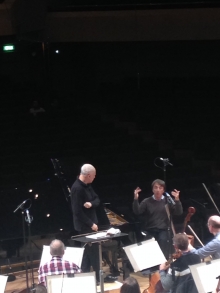 |
MANCHESTER Bridgewater Hall
Hindemith, Ravel and Mahler from the BBC Philharmonic
BACHTRACK January 31 2016
by Rohan Shotton
The evening’s highlight was Jean-Efflam Bavouzet’s dashing account of the bimanual Ravel Piano Concerto, which combined technical facility with enormous musical sensibility to create a memorable performance."
|
|
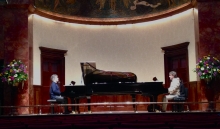 |
LONDON Wigmore Hall
"Transcriptions for two pianists"with François Frédéric Guy
SEEN and HEARD, by Colin Clarke - June 15, 2015
Bartók – Two Pictures, Op. 10 (arr. Kocsis?)
Debussy – Jeux (arr. Bavouzet)
Stravinsky – Le sacre du printemps (arr. two pianos by the composer)
This was a fascinating concert. Bavouzet and Guy played two of the three pieces in a recent BBC Radio 3 Wigmore lunchtime recital; here they added the Bartók and, effectively, played their new CD (Chandos CHAN10863).
Interestingly, the players used Yamaha grands – Bavouzet’s Debussy series on Chandos, the nearest of his discs to hand for me as I write this, was recorded on a Steinway. The Chandos recording of this repertoire also uses a Yamaha – for the extra brightness and clarity, I wonder?
Whatever the case, the programming was inspired. The programme note for the Bartók was, I think, the Wigmore’s stock note for that piece. It talks about the impact of Debussy on the Pictures, of the mix of France with Hungarian verbunkos, but nothing about whether what we heard was an arrangement or not. The Chandos recording states that there it is the Zoltán Kocsis transcription that was used, so I suspect that was what was played on this occasion.
For the first half, Bavouzet sat to the left, as Primo, and Guy to the right. It was a delight to hear two such intelligent pianists, so clearly on the same wavelength, and judging the hall acoustics to perfection (in contrast to Paul Lewis in the last three Beethoven sonatas a couple of nights previously, who showed a tendency to over-compensate). In the piano version, fortes became extra powerful, shorn of any orchestral ‘cushion’; yet sometimes Bartók’s writing showed distinct Debussian influences, a sort of dark, Pelléas-like wash of sound. No missing the Bartókian earthiness of the second piece, though, its rhythms excitingly delivered; yet there was surprising wit in Guy’s interjections, also.
So to Debussy himself, for Bavouzet’s transcription of Jeux. In an interview for the American magazine Fanfare, Bavouzet had told me with much enthusiasm about this transcription, so it was an extra treat actually to hear it. It really is remarkable, an impression perhaps enhanced by the excellence of the performance. Control was all, leading to a perfect evocation of the famously erotic threesome tale built around a tennis game. Any of the music’s surface skittishness was subsumed into a gorgeous sea of Debussian harmonic and emotional ambiguity. Technically, there were superbly even scales from both pianists and pinpoint ensemble. The writing is identifiably virtuoso, although both pianists were more than equipped. But the emotional journey was what mattered, and the surfacing of ecstasy at one point was remarkable.
The two-piano version of Stravinsky’s Rite found Guy on Primo. The ear was often drawn, it has to be said, to the level of detail in Bavouzet’s part, but what was perhaps most impressive was that even at the higher dynamic levels one could identify Stravinsky’s layering techniques. A sense of dialogue, so vital to this piece, was everywhere present between the two pianists. If the famous accents of ‘Augurs of Spring’ were not as bone-crushing as one might have liked or expected, it turned out to be a structural decision: the lead-in to the next section, ‘Jeu du rapt’ (‘Ritual of the abduction’) was all the more visceral.
The opening to the second part brought some luminous chording. Here, the music’s power lay in its hypnotic qualities. Even the famous ‘Danse sacrale’ was more evidently balletic, more born of the dance, than one is used to. The repeated rhythms held huge power within them, a power waiting to explode into the high interjections.
It was a remarkable end to a remarkable concert. There were encores, as one might expect from a short evening, and it was Ravel who stepped up to the plate: two-piano versions of movements from Rapsodie espagnole. And they don’t turn up on the disc.
This was a superb evening.
Colin Clarke
|
|
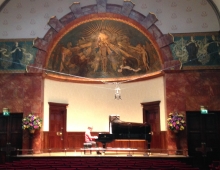 |
LONDON Wigmore Hall
THE GUARDIAN ***** by Fiona Maddocks
May 26, 2015
Daniel Barenboim; Jean-Efflam Bavouzet; La bohème – review
..Even Barenboim would acknowledge that there are other fine pianists around. Jean-Efflam Bavouzet, who escapes the very celebrity on which Barenboim thrives, gave a tightly organised lunchtime recital at Wigmore Hall, embracing Beethoven’s Sonata in F sharp Op 78, Boulez’s Piano Sonata No 1, movements from Maurice Ohana’s Douze Etudes d’interprétation and three Debussy Etudes. Each of the works was linked, by inspiration or influence. Bavouzet’s playing has precision, finesse and fiery elegance, as expressive in the fluidity of Debussy as in the percussive vigour of the Boulez, written when the composer, 90 this year, was 21. An award-winning Debussy player, Bavouzet concluded with a dazzling account of L’isle joyeuse, leaping from the piano stool with a joyful twirl on the final note. I urge you to listen on iPlayer.
|
|
 |
EDINBURGH Usher Hall
Royal Scottish National Orchestra
Neeme JÄRVI conducting
SEEN AND HEARD February 22, 2015
by Simon Thompson
"..There was sparkle aplenty in Prokofiev’s Third Piano Concerto, too, but this time generated most obviously by some fairly stunning pianism from Jean-Efflam Bavouzet. This often understated, always musical, pianist here turned into a dynamo, fizzing up and down the keyboard with the energy of a nuclear reaction. It was a cracking performance which, for energy and excitement, rivalled even Danil Trifonov’s EIF opener back in 2013, and that’s saying something"
|
|
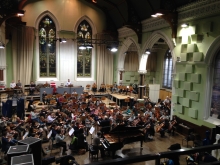 |
GLASGOW Royal Concert Hall
Royal Scottish National Orchestra
Neeme JÄRVI conducting
HERALD SCOTLAND February 22 2015
by Michael Tumelty
5 STARS
"...The programme was tailor-made Jarvi material... and welded to the phenomenal French pianist, Jean-Efflam Bavouzet in a blisteringly-precise account of Prokofiev's Third Piano Concerto, in which Bavouzet, who, en passant, will make a brief appearance in this Saturday's music column, created a wonderfully-effective mix of Prokofiev's gleaming melodic genius, richly-harmonic colouring, and diamond-hard percussive pianism. (The encore was by Gabriel Pierne.)"
|
|
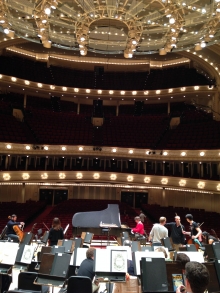 |
CHICAGO Orchestra Hall
London Philharmonic Orchestra
Vladimir Jurowski conducting
CHICAGO TRIBUNE October 19, 2014
by John von Rhein
It was good to have Bavouzet back at Orchestra Hall after an absence of three years. His playing represents much of what one associates with the French piano school: clear and precise articulation of notes, poised and elegant lines, sonorities that are hard and bright rather than deep.
You can hear those qualities on his recent Chandos disc of Haydn piano concertos, and they served him well in his cleanly etched account of the Rachmaninov on Saturday. His seemingly infallible fingers took the bravura pages nonchalantly, while his nimble dialoguing with the orchestra's solo woodwinds sparkled. Above all, Bavouzet and Jurowski, a most meticulous accompanist, traced a clear and steady lyrical sweep from beginning to end. It earned both artists, along with the orchestra, an appreciative reception.
|
|
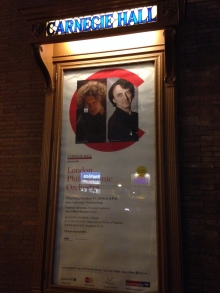 |
NEW YORK Carnegie Hall
London Philharmonic Orchestra
Vladimir Jurowski conducting
THE NEW YORK TIMES
By Anthony Tommasini October 17, 2014
The superb French pianist Jean-Efflam Bavouzet was soloist in Rachmaninoff’s Rhapsody on a Theme of Paganini. Those expecting a French artist to exemplify stereotypical French sensibilities, like refinement, might have been surprised by Mr. Bavouzet’s crisp, incisive playing. This was a bracing account of a familiar piece. There was no dawdling in ruminative variations, and just enough use of expressive rubato in episodes of soaring lyricism.
After receiving a big ovation, Mr. Bavouzet played a solo encore: Debussy’s Prelude “Feux d’artifice” (“Fireworks”). This performance conveyed all the wildness of this swirling, dizzying music. The leap from this work to the Ligeti études seemed not that far.
|
|
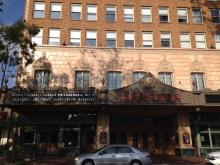 |
SANTA BARBARA Granada Theater
London Philharmonic Orchestra
Vladimir Jurowski conducting
Santa Barbara Independent October 15 2014
by Joseph MillerGrammy Award–winning French pianist Jean-Efflam Bavouzet, featured soloist for the Prokofiev, gave a powerfully assured performance of this demanding keyboard part, sensitively dialoguing with the orchestra and deftly inhabiting Prokofiev’s fiendish surprises and cutting wit. After a stormy ending to the first movement, the Andantino begins placidly with the promise of reprieve but minutes later explodes with the soloist racing up and down the keyboard, whipping the symphony into a fever and settling into hand-crossing gyrations. Bavouzet was wonderful, and I’m certain a few patrons previously lukewarm about Prokofiev were converted.
|
|
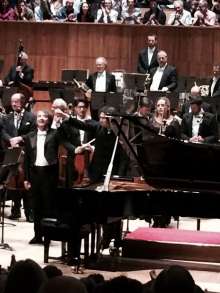 |
LONDON Royal Festival Hall
London Philharmonic Orchestra, V. Jurowski conducting
THE GUARDIAN , Sept 25 2014 by George Hall
"Jean-Efflam Bavouzet’s flawless account of Prokofiev’s Third Piano Concerto was a highlight of the London Philharmonic’s season-opening concert.
This proved to be an extraordinarily accomplished performance. Often, the sheer brilliance of Prokofiev’s virtuosic piano writing is deemed challenge enough for any mere 10-fingered exponent, without having to worry about niceties of interpretation. For Bavouzet, however, the notes were merely the beginning. Finely nuanced in touch and tone, his performance demonstrated the delicacy as well as the mechanised energy of the young Russian composer’s dazzling talent, while his two encores, by Debussy and Massenet, offered further evidence of his subtle colouristic range and flawless dexterity."
CLASSICALSOURCE, Sept 24 2014 by Peter Reed
For a moment you think that Prokofiev is evoking a sublime Russian wonderland at the start of his Third Piano Concerto, before the gloves come off in some of his most dazzling music. Jean-Efflam Bavouzet was on top form – impulsive, maverick, at times insanely virtuosic, the ideal pianist for a Piano Concerto that flies by the seat of its pants. Listening to Bavouzet diving into and powering out of the orchestra was a bit like watching a loop-tape of Tom Daley, of being briefly suspended between elements. Behind the bravura was a steely control that gave a special weight to the music’s high romance. Perhaps Bavouzet overdid the lounge-lizard jazz improvisation style in the first variation of the Andantino, but it was affectionate, witty and, above all, fresh, and his surges of power in the first movement’s reprise and in the finale’s coda was simply astounding – you could feel the energy feeding on itself. The finale’s glissandos were virtuosic, and despite some dizzy speeds there was little smudging of detail. Jurowski drew a characteristic sheen from the LPO players, a surface reflective and pliant enough to cope with Bavouzet’s incandescent high-wire act, in which there wasn’t a moment when you couldn’t hear the work’s glamorous personality coursing through his playing. He calmed himself down, a bit, with his first encore, Debussy’s ‘La fille aux cheveux de lin’ (Préludes, Book I), then rebooted himself in his second, Massenet’s very French, very flashy Toccata."
EVENING STANDARD, Sept 25 by Barry Millington
LPO was joined by Jean-Efflam Bavouzet for Prokofiev’s Piano Concerto No 3 in C major. If Bavouzet seemed inclined to emulate the composer, whose own reading of the concerto was characterised as steely-fingered by a contemporary critic, then perhaps that is forgivable in a work that makes such a virtue of metallic brilliance. Certainly the acerbic edge to the jauntiness was well brought out and there was no doubting the dazzling virtuosity of Bavouzet’s fingerwork."
BACHTRACK, September 25 by Jack Johnson
Achieving a convincing interpretation of the marriage of the more sardonic elements of Prokofiev’s writing and the tangible influence of impressionism, whilst simultaneously mastering the technical challenges, is a difficult task and Bazouvet and Jurowski did a commendable job of shaping a performance of great musicality. Bazouvet played two encores, including a particularly touching rendition of Debussy’s La fille aux cheveux de lin, which smartly accentuated the impressionistic elements in the Prokofiev concerto."
|
|
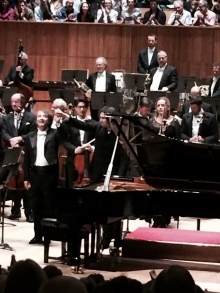 |
LONDON Royal Festival Hall
London Philharmonic Orchestra
Vladimir Jurowski conducting
BACHTRACK **** 25 September 2014
by Jack Johnsonexhilarating performance of Prokofiev’s Piano Concerto no. 3 by Jean-Efflam Bavouzet. What was most surprising about the performance was the appearance of effortlessness on Bavouzet’s part. This is a notoriously difficult piano score with many rhythmic challenges, particularly involving the interplay with the orchestra, yet it is also one of Prokofiev’s most impressionistic pieces. Achieving a convincing interpretation of the marriage of the more sardonic elements of Prokofiev’s writing and the tangible influence of impressionism, whilst simultaneously mastering the technical challenges, is a difficult task and Bavouzet and Jurowski did a commendable job of shaping a performance of great musicality. Bavouzet played two encores, including a particularly touching rendition of Debussy’s La fille aux cheveux de lin, which smartly accentuated the impressionistic elements in the Prokofiev concerto.
|
|
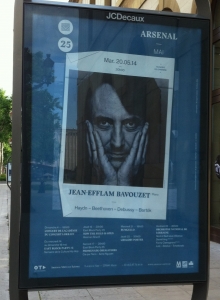 |
Metz Arsenal Grande Salle recital
Le Républicain Lorrain by Georges Masson, May 2014
"Outre sa technique infaillible, il nourrit une palette de sons qui vont bien au-delà de la peinture impressionniste car il tire du Steinway des timbres inattendus d'une richesse de couleurs et d'une modernité qui transcende son époque... Prodigieux."
On se serait cru au temps des saisons de l'Alam où les récitals de piano des grands maîtres de l'ivoire, avaient lieu dans la grande salle de l'Arsenal, ce qui donnait de la classe au concert. Jean-Efflam Bavouzet. le soliste chéri des mélomanes messins, en fut. l'autre soir, l'artiste au zénith. Encore que l'an dernier, il avait tout de même forcé la dose, lorsqu'il interpréta avec l'ONL le Concerto de jeunesse de Gabriel Pierné.
Mais cette fois, c'est une face nouvelle de l'interprète que l'on découvrait. Avec la Sonate 33 de Haydn d'abord. On avait plutôt l'habitude de l'entendre rigoureusement millimétrée et classiquement calée entre ses barres de mesures. Foin de l'académisme ! JEB. lui. invente une histoire, distillant sa sensibilité au travers d'un Allegro caressant, gai et léger comme un vol de colibri. Sa ligne immaculée, au Sostenuto. ne plonge nullement dans l'austérité qu'on lui prête, mais ses doigts du cœur poursuivent leur parcours d'une pureté émerveillée, tandis qu'au Final, à contre-courant d'un dramatisme annoncé, il en dessine d'identiques contours, anticipatoires d'un romantisme fleurissant. Une touche à la française dira-t-on ? Le fond viennois apparaît toutefois en filigrane. Même trajectoire dans la Walds-tein de Beethoven où Jean-Efflam procédera d'une approche quasi similaire mais d'une amplitude solidement calibrée.
Son toucher limpide, son agilité fur-tive. l'élasticité de ses traits à donner le vertige, et la virtuosité cursive qui ne l'est pas moins, se manifestent dans les rebonds déployant la sensibilité imaginée du maître dont son interprète en pénètre la confidentialité et jusqu'à la complicité qu'il semble lui offrir en partage. Tout en contournant les puits d'ombre avant de bondir à nouveau, il entend incarner la dimension émotionnelle du compositeur qui apparaît àtravers sa vision onirique des affects et la poésie éthérée qu'il en dégage. Une approche contrastant totalement avec les interprétations germanisantes.
Couleurs debussystes
Seconde partie : c'est Debussy dont il est le spécialiste que va nous servir l'invité du jour avec ses 5 Études du premier Livre qui vont bien au-delà de la simple scolastique du titre. Outre sa technique infaillible, il nourrit une palette de sons qui vont bien au-delà de la peinture impressionniste, car il tire du Steinway des timbres inattendus d'une richesse de couleurs et d'une modernité qui transcende son époque. Des vertiges éblouissants de la I" à l'éruption inattendue de la 2e. le pianiste distille une émotivité fine et parfaitement contrôlée, une humeur joyeuse et de térébrants accès de fièvre sonore. La 4' développe des images réfléchies auxquelles on pourrait donner un nom tant elles sont descriptives, la 5' incarnant l'impressionnisme de papillons voletant ici et là. On y distingue nettement la patte de Bavouzet à nulle autre pareille. De Bartok pour finir, son unique sonate est un peu moins dans les cordes du clavié-riste qui. bien qu'il en respectât la solide charpente rythmique et la répétitivité percussive.n'use pas d'une férocité sonore qu'on a pu déceler chez certains solistes impétueux. On soulignera ici. les haletants « marcato ». la tension bien régulée, le volume qui. sans être orchestral, est solidement nourri, et la maîtrise totale de tous les éléments jusqu'à l'éclat final. Cerise sur le gâteau : les deux « bis ». Ondine de Ravel et Toccata de Massenet. Prodigieux.
Georges MASSON
|
|
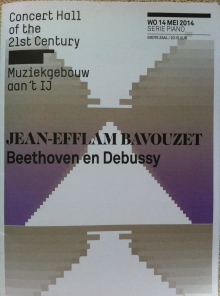 |
Muziekgebouw Amsterdam Piano Serie
Het Parool May 15 2014, by Roeland Hazendonk
"Bavouzet is zo'n topper. Hij combineerde kracht en raffinement en boeide met buitengewoon goed getroffen fraseringen en een fraai gedoseerde klank."
|
|
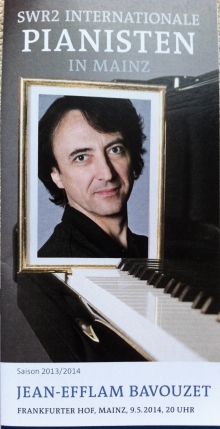 |
SWR2 Internationale Pianisten in Mainz
Wiesbadener Kurier, by Axel Zibulski May 12 2014
" Auch Bartóks Sonate mit ihrem messerscharfen Drive und ihrer rhythmischen Sogkraft faszinierte zum Abschluss dieses Saisonfinales der „SWR-Pianisten“, das Bavouzet mit drei Zugaben von Debussy bis Ravel enden ließ."
|
|
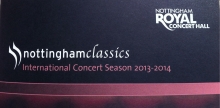 |
Nottingham Philharmonia Gala Concert
Nottingham Post by William Ruff May 1 2014
"Bavouzet and Ashkenazy were of like mind in their approach to shaping and colouring melodic lines, avoiding sentimentality but always allowing the music to sing"
|
|
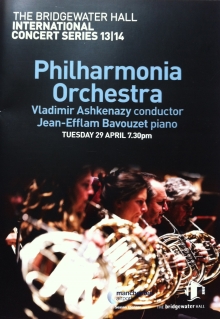 |
Manchester Bridgewater Hall
bachtrack by Rohan Shotton, May 2, 2014
"He found extraordinarily lovely expressive touch in the Adagio despite a fairly forward looking tempo, immaculately shaping each phrase into elegant strands...Elsewhere, Bavouzet played with impressive power and drama. "
|
|
 |
Seattle Symphony
Conductor, soloist make impressive SSO debuts
The Seattle Times
Bernard Jacobson
January 24 2014
Bavouzet accomplished prodigies of prestidigitation in the opening Vivace.
|
|
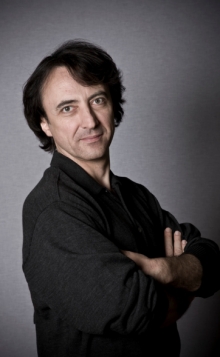 |
PARIS Théâtre des Champs Elysées
L'art du clavier selon Jean-Efflam Bavouzet
ResMusica January 28 2014
by Victoria Okada
Sonate « Waldstein » de Beethoven. L’allure qu’il donne au début est merveilleusement maintenue tout au long du premier mouvement, ce qui est déjà assez rare, mais plus rare encore est qu’il le joue également avec un grand naturel, sans laisser apercevoir le moindre effort, comme si cette musique jaillissait de ses doigts.Pianiste trop discret, Jean-Efflam Bavouzet n’est pas pour autant discret quant à l’expression de son art. Au contraire, son interprétation, un véritable art, est toujours convaincante, rassurante et stylistiquement juste. Voici comment.
Le premier morceau, la Sonate en ut mineur de Haydn, montre d’emblée la clarté du discours à travers une sonorité tout aussi claire. Il exécute toutes les reprises mais ne donne aucunement une impression de répétition alors qu’il n’y met absolument pas l’accent sur des contrastes par rapport à la première apparition de chaque section. C’est donc avec un grand naturel que se déroule sa musique, le plus simplement possible. Et pourtant, des détails sur les sons adoptés – dans le mouvement lent, le son est perlé ou enveloppé, tandis que dans l’« Allegro » final le ton est plus ferme, dans un caractère complètement différent – sont remarquables.
Vient ensuite la redoutable Sonate « Waldstein » de Beethoven. L’allure qu’il donne au début est merveilleusement maintenue tout au long du premier mouvement, ce qui est déjà assez rare, mais plus rare encore est qu’il le joue également avec un grand naturel, sans laisser apercevoir le moindre effort, comme si cette musique jaillissait de ses doigts. La tranquillité apaisante du mouvement médian est très justement dosée pour arriver au final. Là, le musicien interprète le motif thématique, repris par l’octave, comme un vrai enchantement, grâce à cette sonorité cristalline, telle une lumière divine. Vers la fin, il exécute en double glissando les gammes descendantes et ascendantes en octave et en pianissimo, de telle manière que cela évoque une sorte de carillons célestes.
Si dans Beethoven il a augmenté en puissance le caractère d’attaque sur le clavier, dans Bartók c’est bien l’aspect du clavier-percussion qu’il déploie, tout en entretenant la douceur semblable à la corde dans « Sostenuto pesante ». La polyphonie d’intensités, de couleurs et de rythmes est mise en avant par une force éclatante, qui laisse l’auditeur bouche bée.
Dans les trois pièces, le rapport entre plusieurs lignes mélodiques ou celui entre la voix principale et les autres voix est toujours clairement traité, d’où le discours extrêmement intelligible. Et intentionnellement ou pas, son interprétation suggère trois types de clavier, clavecin, piano-forte et piano moderne, sur un seul Steinway. Seul un grand artiste en est capable.
|
|
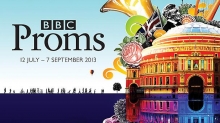 |
Prom 30
Noseda and the BBC Philharmonic dance with the Russians
bachtrack
Alexandra Hamilton-Ayres
August 7, 2013
French pianist Jean-Efflam Bavouzet stormed through Prokofiev’s Piano Concerto no. 2 with style. It is known for being an immensely challenging work with many different facets. There is always an underlying romanticism to the melody underneath the dissonances. This was demonstrated in the Andatino, where Bavouzet played arpeggios up and down the piano with an inbuilt theme giving a sense of a caged romantic melody trying to break free.The double-act of Bavouzet and Noseda had a great chemistry on stage, both very dynamic in their display.
|
|
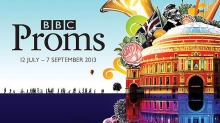 |
Bavouzet, BBC Philharmonic, Noseda
Russians dance at the Italian conductor's command
David Nice
August 6, 2013
The scherzo flashed past with greater velocity and nimbleness than I’ve ever heard before, while the cavalcade of third-movement monsters found Noseda and Bavouzet playing naughty boys rather than carnivorous dinosaurs.There was poetry at just the right point in the rather prolix finale.
|
|
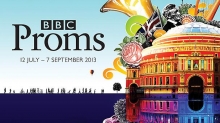 |
Prom 30
Gianandrea Noseda - Bavouzet play Prokofiev
classicalsource
Peter Reed
August 5, 2013
My admiration for Jean-Efflam Bavouzet’s pianism is boundless, but his playing in the phenomenally demanding Prokofiev Second Piano Concerto confounded the already high expectations. He was sensational, with Noseda and the BBC Phil every bit as responsive and risk-taking in music that veers with psychotic insouciance from nineteenth-century Russian grandeur to mechanistic Communist pomp. It’s a marvellous work, and Bavouzet was assured in its acid wit, beleaguered moments of lyricism and barnstorming heroics. I was poleaxed by the colossal sound and wrong-note accuracy he produced in the rhapsodic first-movement cadenza. The sheer élan of his technique would have been enough to sustain the performance, but he and Noseda also dug into the music’s character. In the third movement, a ripe slice of Soviet brutalism, Bavouzet’s mimicry of the orchestra was wicked and brilliant, and it made you realise the mercurial ease with which the music’s lead passes to and fro between soloist and conductor.
|
|
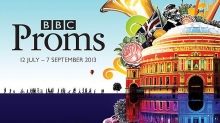 |
PROM 30
Sparkling Prom from Bavouzet, Noseda and the BBC Philharmonic
Seen and heard international
Robert Beattie
August 5, 2013
This concert was an unalloyed triumph from start to finish and featured the BBC Philharmonic on blistering form, and a superb soloist giving a first rate account of one of the most taxing pieces in the classical repertoire. The finale was a sensational piece of playing with Bavouzet giving an adrenaline-fuelled account of the opening leaping theme and a beautifully worked and highly virtuosic cadenza. In the quieter sections he showed excellent control of tone production and dynamics – there was an emotionally distant quality to the music and the faintest hint of steel in the background. The coda was sensational and had me on the edge of my seat from start to finish.
|
|
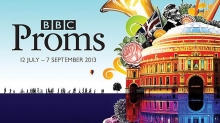 |
Prom 30
BBC Philharmonic/Noseda Bavouzet
The Guardian
George Hall
August 6, 2013
Jean-Efflam Bavouzet was the soloist in Prokofiev's determinedly anti-Romantic Second Piano Concerto, a work of such appalling difficulty that it is a wonder anyone attempts to play it. Bavouzet began dreamily, before embarking on the huge technical challenges of its waywardly virtuosic writing, especially its two vast and nigh on impossibly perverse cadenzas.His synchronised fingerwork in the moto perpetuo Scherzo was astounding.
|
|
 |
Ludwig Meets Wolfgang in a First-Night Encounter
Alice Coote and Jean-Efflam Bavouzet at Mostly Mozart
THE NEW YORK TIMES
Zachary Wolfe
July 31, 2013
Mr. Bavouzet, always a fascinating artist, was content to remain idiosyncratic, following long, moody pauses with runs of marbled clarity and contrasting, in the slow movement, the dreamy deliberation of his opening tempo and the vehemence of his trills.
|
|
 |
A Bit of Background Helps Frame Melodies
Jean-Efflam Bavouzet Performs at Kaplan Penthouse
THE NEW YORK TIMES
Vivian Schweitzer
August 1, 2013
The superb pianist Jean-Efflam Bavouzet took a more unusual approach when, after beginning Debussy’s “Préludes” Book II at the Kaplan Penthouse on Wednesday evening, he stopped abruptly a few notes into “Puerta del Vino” and began an energetic discourse on Debussy’s aesthetic.Throughout the set, Mr. Bavouzet’s deft touch, fluid playing and coloristic flair illuminated myriad details, which unfolded with crystalline clarity and hazy atmospherics in turn.
|
|
 |
Mostly Mozart Festival Opening, New York
With impressive turns from two stellar soloists, this year’s edition got off to a flying start
FINANCIAL TIMES
Martin Bernheimer
July 31, 2013
In the Beethoven concerto, Bavouzet sustained a perfect balance between introspection and flash, bridging vast dynamic and tempo extremes without mannerism or eccentricity. He even made luxurious sense of Beethoven’s most exhaustive, stormy, circuitous cadenzas.
For once, a festival really seemed festive.
|
|
 |
A Pianist With 176 Keys to Play With
Jean-Efflam Bavouzet at International Keyboard Institute
THE NEW YORK TIMES
Steve Smith
July 28, 2013
I can’t recall a more gripping performance of “La Cathédrale Engloutie” (“The Submerged Cathedral”), the high point of an account both exacting and spontaneous. A rousing ovation earned a single encore: a sparkling “Feux d’Artifice” (“Fireworks”), from Debussy’s second book of Préludes....The darker, warmer tone of the Steinway suited Mr. Bavouzet’s rendition of Debussy’s Préludes, Book 1, in which a painterly range of tones and phrasings evoked illumination and fancy without sacrificing integrity.
In the Sonata in C (Op. 53, “Waldstein”), his tempo for the opening Allegro con brio was brisk, yet brilliantly controlled, with thundering climaxes and an affirmative tone. As a gracious Adagio molto segued into an animated Rondo, you were reminded not just of how revolutionary Beethoven once was but how idiosyncratic and personal his music remains.
|
|
 |
Prokofiev 1st & 4th Concertos, MANCHESTER, UK
Bavouzet with the BBC Philharmonic and Noseda, at Bridgewater Hall, Manchester
THE GUARDIAN
Tim Ashley
4, Nov 2012
"Jean-Efflam Bavouzet is among the most generous and indefatigable of performers"
French pianist Jean-Efflam Bavouzet is among the most generous and indefatigable of performers, sometimes playing two works for piano and orchestra in an evening, rather than the usual one. Such was the case on this occasion, when he tackled Prokofiev's First and Fourth Concertos as the centrepieces of a particularly strong BBC Philharmonic concert, conducted by Gianandrea Noseda.
Both concertos are eccentric and suit Bavouzet's glamorous playing and quirky temperament well. The First is a one-movement ragbag of themes and styles, written when Prokofiev was only 21. The Fourth, commissioned by Paul Wittgenstein, is for the left hand only and can seem pithy, despite a slow movement of considerable grandeur and weight. The panache and charm that Bavouzet and Noseda brought to the First proved wonderfully appealing. The Fourth was all morbid humour and sardonic elegance. Bavouzet flung out scales and arpeggios with steely precision. The orchestral sound was impeccably detailed. (...)
|
|
 |
Bartók, SAN FRANCISCO SYMPHONY
SAN FRANCISCO CHRONICLE
Joshua Kosman
October 5, 2012
"Bartók's wonderfully soulful and effervescent Third Piano Concerto with Jean-Efflam Bavouzet making a powerful Symphony debut as soloist. It was pure, unaffected delight all the way through"
(...) But the Bartók was the beating heart of the program, in a performance marked in turn by virtuosity, ebullience and tender lyricism. Bavouzet adopted a dry, sharp-edged approach to the first movement, bringing out the contrasts between piano and orchestra, and leavened the same ideas with extroverted showmanship in the fugal finale. In between came the slow movement, marked "Adagio religioso," in a soulful and long-breathed reading."
SEEN AND HEARD INTERNATIONAL - Harvey Steiman
"This time the highlight came with a warm and incisive traversal of Bartók’s final piano concerto. French soloist Jean-Efflam Bavouzet didn’t blaze through it so much as let the music flow naturally, spiked with just enough rhythmic bite to keep it juicy.
The piece starts quietly, the piano ruminating on what feels like a homespun theme while the orchestra lays down a bed of pulsating harmony. The interplay between the orchestra and piano was seamless and unhurried, concluding with a wisp of a flute question answered matter-of-factly by the piano. The night music of the middle movement, marked “adagio religioso,” is modeled after the thankful hymns Beethoven wrote for the slow movement of his String Quartet in A minor, Op. 132. Bavouzet found a warm, supple tone for the piano’s chorales while Petrenko delicately wove an interplay of strings around it. Bavouzet was equally commanding when the finale, bursting with rhythm, quickly delved into a prickly fugue. He rendered it crisply, with a sense of forward motion that Petrenko picked up smoothly and carried to a rousing conclusion."
|
|
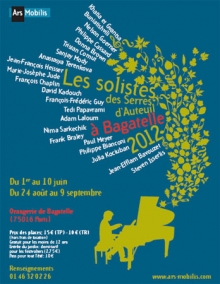 |
Solistes des Serres d'Auteuil à Bagatelle
7 Septembre 2012
1ère Partie: avec Steven Isserlis Sonate n°1 de Debussy, Sonate n°1 de Camille Saint-Saëns, Rhapsodie n°1 de Bartók
2e Partie: Concerto pour la main gauche de Ravel, Préludes de Debussy
FRANCE TODAY
"Le gentleman français du piano, Jean-Efflam Bavouzet, en pleine maturité à tout juste 50 ans, ne s’est jamais senti aussi en forme, et cela s’entend, se voit, se respire, comme lors de son récital du festival SOLISTES DES SERRES D’AUTEUIL A BAGATELLE du 7 septembre dernier à Paris. Il a enthousiasmé le public lors d’une première partie virtuose et originale en compagnie du violoncelliste anglais Steven Isserlis (sonate n°1 de Debussy, Sonate n°1 de Camille Saint-Saëns, Rhapsodie n°1 de Bartók). Puis seul au clavier, en deuxième partie, il a pu donner toute sa mesure en interprétant un concerto pour la main gauche du compositeur français Maurice Ohana (redonné en bis !), suivi des Préludes du Livre II, année Debussy oblige (150ème anniversaire de sa naissance). Et alors là, on avait le souffle coupé par sa palette infinie de couleurs et tant de sensualité maitrisée.
Cette pleine possession de ses moyens à l’aube de la cinquantaine se retrouve dans son ébouriffant calendrier de l’année 2012 qui donne le tournis, avec quelque 75 concerts d’un bout du monde à l’autre, de l’Europe à l’Australie en passant par la Chine et l’Amérique du sud, sans oublier New York et Chicago en mars, puis New York à nouveau en août pour le Mostly Mozart Festival.
Retour aux USA dès octobre à San Francisco puis en novembre à Morrow (près d’Atlanta) puis direction Montréal, en passant par Bogota, Sao Paulo, Moscou et Pékin!
Selon lui, ce calendrier s’explique par « la conjonction heureuse » de ses deux prix- GRAMOPHONE ARTIST OF THE YEAR 2012 et BBC AWARDS 2012- et de l’année Debussy.
Mais comment garder la grande forme avec un programme pareil? « En emmenant sa femme avec soi en voyage ! », répond cet homme heureux.
Son intégrale Debussy va ressortir cet automne en coffret chez CHANDOS, sa maison attitrée, succédant à Ravel, Manuel de Falla et -surprise !- Beethoven. Il s’en explique à sa façon charmante:« « Nuits dans les jardins d’Espagne » était une évolution naturelle après Ravel et Debussy. De même qu’il y a des passages debussystes dans de Falla, Debussy a écrit des choses sublimes dans le plus pur style espagnol. Pour les sonates de Beethoven ce sera peut-être la 120ème intégrale enregistrée, mais laissez-moi l’illusion de souhaiter que je puisse contribuer à apporter ma pierre à l’édifice beethovénien ».
Les heureux afficionados de Morrow, près d’Atlanta, pourront juger sur pièce, le 17 novembre, ce grand performer dans Beethoven, et dans un de ses tubes, les Préludes de Debussy, Livre 1.
Quant aux amateurs de San Francisco et de Montréal, ils ne devraient pas rater l’occasion de l’entendre dans le troisième concerto de Bartók, qui convient à son tempérament enthousiaste, et lui est particulièrement cher : « Sir Georg Solti m’avait fait l’honneur de m’inviter à l’interpréter avec l’Orchestre de Paris en 1998, et je pense inévitablement à lui quand je le joue. Cet automne le monde entier célèbrera son 100ème anniversaire et je suis heureux d’y participer. »
A la fois enthousiaste et modeste...la grande forme!"
|
|
 |
Mostly Mozart, LINCOLN CENTER, NY
THE NEW YORK TIMES
Anthony Tommasini
August 10, 2012
"A Vibrant Performance, Though Neither Mozart Nor Even Baroque"
After the concert the French pianist Jean-Efflam Bavouzet played a solo recital at the Kaplan Penthouse as part of the festival’s popular Little Night Music series. He began with a beautifully pensive and technically nimble account of Haydn’s Sonata in C minor (Hob. XVI:20). Then he turned to Debussy: the “Hommage à Haydn,” followed by an expansive, richly colored performance of “Images,” Series 1.
Mr. Bavouzet ended with his own astonishing and extremely difficult arrangement of Debussy’s pathbreaking, erotically charged 1912 ballet, “Jeux.” He preceded his performance with an engaging explanation of what the ballet is about (two young women meet a young man on a tennis court, and things turn steamy) and why he tried to transcribe such a complex orchestral work into a piece for “just 10 fingers.” His fingers served him well in this dazzling performance.
---------
"It is hard to attend Mostly Mozart Festival concerts these days without getting birds on the brain. Birds and bird song are a pervasive element of this year’s festival, which is exploring the “avian theme inside and outside the concert hall,” as Lincoln Center’s artistic director, Jane Moss, explains in a program note.
(...)
On the other hand, I have been newly attuned to bird-song passages in pieces I know well. Especially on Friday at Fisher Hall, during a terrific performance of Bartok’s Third Piano Concerto by the exciting French pianist Jean-Efflam Bavouzet and the Mostly Mozart Festival Orchestra, conducted by Louis Langrée. In the central episode of the serene slow movement, Bartok evokes mysterious night music, complete with sounds of birds and insects. Some people near me actually sat up and smiled when the piano and woodwinds played riffs and trills that evoked bird song.
Bartok wrote this concerto in 1945, the year he died, while he was gravely ill. He purposefully made it accessible, tuneful and fetching. Though there are real difficulties for the pianist, the Third Concerto is much more playable than the knotty First or the audacious Second. Mr. Bavouzet, fresh from a splendid recital of works by Haydn and Debussy the night before in one of the festival’s Little Night Music programs, reveled in the concerto’s folkloric themes, dancing spirits and bursts of crunchy chords.
In the somber opening of the second movement, marked Allegro religioso, Mr. Bavouzet voiced the theme with careful attention to the slight inner dissonances that tweak the calming harmonies. He dispatched the romping finale with a judicious blend of incisive touch and myriad colorings.
It was an inspired idea to precede the Bartok with Lutoslawski’s “Musique Funèbre” (1958), an absorbing, densely textured piece for strings, conceived as a memorial for Bartok and written in a language drawing on 12-tone technique. It begins with a sole cello, soon joined by another, playing short motifs that coalesce into yearning themes and intertwining lines. The music builds in depth and intensity to gnashing, enveloping harmonies played by the full strings.
The central section of the piece grows almost fitful with anguish before the music slowly devolves into fragments and broken phrases. Finally, just the cello, with which it all started, is left. Under Mr. Langrée, the orchestra’s string players gave a plush, taut and haunting performance.
After intermission Mr. Langrée conducted a stylish and glowing account of Mozart’s Symphony No. 39 in E flat. This was good, if not exceptional, Mozart playing. The musicians were at their best during their impressive performances of the Bartok and Lutoslawski works. Things have changed at the Mostly Mozart Festival when you can say that."
|
|
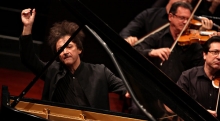 |
Mostly Mozart, LINCOLN CENTER, NY
WWW.BACHTRACK.COM
Evan Mitchell
August 10, 2012
"Mr. Bavouzet gave an enthralling reading of the Bartók, with a strong collaborator in Mr. Langrée. Mr. Bavouzet’s sound was as if amplified: absolutely huge – always above the orchestra in the difficult acoustic of Avery Fisher Hall – while rarely sounding as if it was the result of physical strain. He relished the dialogue between soloist and orchestra, perfectly mimicking the articulation and timbre of the clarinet in two-note slurs throughout the opening Allegretto. The otherwise lovely second movement was marred by a chorale of winds with questionable intonation and even worse dynamic restraint, but the third movement closed the work energetically and was the tightest in terms of ensemble. Perfectly in keeping with the joyous mood of the ending, Mr. Bavouzet shoved his bench under the piano and jumped up to embrace Mr. Langrée."
|
|
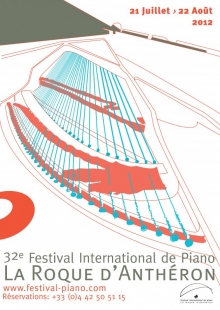 |
Debussy, FESTIVAL LA ROQUE-D'ANTHERON, FR
LA PROVENCE
Jacques Corot
2 Août 2012
Debussy, Bavouzet et la lune..
.
"Sous [les] doigts [de Jean-Efflam Bavouzet] les émotions explosent, les sentiments affleurent." Jacques Corot
Il y a des moments magiques qui ne se passent que pendant les festivals de l'été. Mardi soir à l'étang des Aulnes, un des lieux "décentralisés" du festival de la Roque d'Anthéron, au moment du bis, Jean-Efflam Bavouzet joue Clair de Lune de Claude Debussy au moment même où elle se lève, belle, pleine, majestueuse, juste en face de lui. C'était la conclusion parfaite pour une soirée qui ne l'était pas moins.
(...)
Jean-Efflam Bavouzet entamait le cycle de l'intégrale pour piano de Debussy qu'il poursuivait hier au Châtean de Florans avec Philippe Cassard. Le pianiste est devenu un des meilleurs spécialistes du compositeur français. Il a ce toucher tout en délicatesse et en précision qui sied au plus impressionniste des musiciens. Sous ses doigts les émotions explosent, les sentiments affleurent. Ce fut évident dans Le petit Nègre paru en 1909 où l'on sent comme des airs de jazz et de ragtime. Le pianiste fit également merveille avec le livre II des Préludes, véritable coq-à-l'âne musical, longue rêverie entre la sombre inspiration de Brouillards et le brillant, quoi que "modérément animé", Feux d'artifice. "Quand on n'a pas les moyens de voyager, expliquait Debussy, il faut suppléer par l'imagination". Toute la sensibilité de Jean-Efflam Bavouzet, toute sa subtilité et sa technique sans faille, furent mises au service de cette imagination-là, pour un beau voyage dans la musique.
Par Jacques Corot
|
|
|
ROYAL FESTIVAL HALL Philharmonia Orchestra
THE GUARDIAN
Tim Ashley
December 13th, 2011
“This was one of the great performances of the Ravel, taking it into territory way beyond the realm of art deco cool, with which it is primarily associated. That tough streak in Bavouzet's playing brought out levels of harmonic bitterness we don't usually hear. Ashkenazy, meanwhile, allowed a jittery shrillness to intrude upon Ravel's jazzy scoring. In many respects, this was Bavouzet's concert rather than Ashkenazy's.” (The Guardian, December 2011)
|
|
|
ROYAL FESTIVAL HALL
THE INDEPENDANT
***** Michael Church
December 12th, 2011
"This concert was a big success, but for this flamboyant Frenchman it could mark the beginning of British stardom... Bavouzet achieved an almost Mozartian eloquence; his pianism in the concluding Presto was both electrifying and flawless."
The French pianist Jean-Efflam Bavouzet may be in his mid-forties, but he’s going for the slow burn on this side of the Channel: he’s probably better known to audiences in Beijing (where his Beethoven has caused a sensation) and in the Lofoten islands of Norway (where he runs a piano festival) than he is to audiences in Britain.
Here his reputation rests mainly on his award-winning Debussy recordings, and on his revelatory series of Haydn sonatas for Chandos.
In an interview before playing Ravel’s ‘Piano Concerto in G’, he said the stop-start momentum of the first movement meant that making it sound ‘natural’ was its biggest challenge. He also observed that this work’s character can change according to the company it keeps: programme it next to Stravinsky’s ‘Concerto for Winds’, as Bavouzet often does, and it will seem Stravinskyan, but if it’s juxtaposed with de Falla, as he was going to do here, it will sound quintessentially Spanish.
Ravel rashly proposed to premiere it himself until friends pointed out that he wasn’t up to the pyrotechnics: the pianissimo Lisztean cascade with which the soloist begins is a challenge in itself, but Bavouzet despatched this with nonchalant grace, before evoking the spirits of Stravinsky, Debussy, and Gershwin in the first movement’s kaleidoscopic statement of intent. This work had emerged at a time when jazz and Josephine Baker were all the rage in Paris and, abetted by Vladimir Ashkenazy and the Philharmonia Orchestra, Bavouzet brought out its hard-edged art-deco brilliance with a correspondingly dry and percussive touch. The challenge of the slow movement is to make sense of a melodic line whose softly-ruminative course runs for ten unbroken minutes: with Ashkenazy and the orchestra providing a circumambient glow, Bavouzet achieved an almost Mozartian eloquence; his pianism in the concluding Presto was both electrifying and flawless. High as a kite when taking his applause (and blowing an appreciative kiss to the jazzer-trombones), he sat down again to give a majestic account of Debussy’s tone-poem ‘La puerta del vino’.
Tackling Manuel de Falla’s ‘Noches en los jardines de Espana’ after the interval, he dazzled again. For Ashkenazy and the Philharmonia, who wound up with Debussy’s ‘La mer’, this concert was a big success, but for this flamboyant Frenchman it could mark the beginning of British stardom.
|
|
|
QUEEN ELIZABETH HALL
THE TIMES
Hilary Finch
October 25th, 2011
"And the sound of the Bavouzet fingers is distinctive. It is searching, penetrating, imaginatively fired, and endlessly curious in its exploration of any composer’s unique sound palette and language...He has an ever-growing concentrated following of those who relish a sophisticated, canny musician who plays with an infectious sense of childlike delight."
The Queen Elizabeth Hall wasn’t full, and it should have been. But Jean-Efflam Bavouzet is not a pianist who draws the celeb hunters, nor the piano-circuit groupies, still less the media-obedient. Instead, he has an ever-growing concentrated following of those who relish a sophisticated, canny musician who plays with an infectious sense of childlike delight.
And the sound of the Bavouzet fingers is distinctive. It is searching, penetrating, imaginatively fired, and endlessly curious in its exploration of any composer’s unique sound palette and language. For Haydn, for example, Bavouzet played the Sonata in C minor (Hob XVI/20) on a bright-toned Yamaha, finding a chiaroscuro of dynamics and tones within the elegantly sculpted phrases and trilling curlicues of the first movement, and a supple gentilesse for the slow movement, shaded by the minutest touches of pedalling.
Then the Yamaha was wheeled off, and a Steinway glided on ready for Bavouzet’s artfully ordered programme of Debussy: from his mischievous Hommage à Joseph Haydn to seven of his Études, prefaced by Bartók’s own tributes to Debussy. When the audience, overeager to applaud, threatened to disturb Bavouzet’s meticulously planned sequences (as in a delectable Clair de lune triptych), then Bavouzet just sat tight and let the music segue onwards. His own wonderfully imaginative and virtuoso arrangement of the orchestral Jeux lit the first half; the droll five-finger exercise and triumphant Pour les octaves finale sealed the second.
|
|
|
QUEEN ELIZABETH HALL
CLASSICAL SOURCE
Peter Reed
October 23rd, 2011
"Apart from his phenomenal but understated technique, Bavouzet has in addition an extraordinary ability to seem to be directing his own performances, as though he’s providing a presence outside himself, and it goes some way to explaining the fierce passion, remarkable intelligence and free-wheeling creativity of his transcendent playing."
The last time I heard the French pianist Jean-Efflam Bavouzet live was at this year’s BBC Proms, as soloist in a compelling performance of Bartók’s First Concerto. The same rhythmic tautness, exploratory attention to detail and expressive, wave-like energy came pouring out into this matinee recital. Bavouzet has embarked on recording for Chandos all of Haydn’s keyboard sonatas, which at last seem to be making their way on to the fixtures list of pianists’ programmes. The dark C minor gave us an idea of the quality of musicianship he brings to music that was nurtured by the mannerist High Baroque but by nature set its sights on the very different expressive needs of the Classical style.
It’s preferable, I suppose, for a listener to sit on the keyboard side for a piano recital, but it’s no less illuminating to see a pianist’s pedalling – and to hear the result. Bavouzet’s was faultlessly subtle, with a fortepiano-like deftness that gave a hint of roundness to the scrupulously observed phrasing. Silences play as important a part in Haydn’s limpid, carefully crafted expressive territory, and Bavouzet folded them into the music’s quiet but intense introspection to miraculous effect. In the slow movement he revealed his uncanny ability to open up the melodic cells so that they seem to accrue their own character, which is at the heart of the Classical ‘narrative’ style, a process that Bavouzet enabled here with such distinction.
He played the Haydn on a Yamaha, which was replaced by a Steinway for the rest of the programme. The clipped, bright sound of the former suited the self-contained Haydn, but there was no doubting the more expansive dynamism of the Steinway sound. Just to make clear the connection between Haydn and Debussy’s homage to him, Bavouzet bashed out with one finger the musical transcription of Haydn’s name (B, A, D, D, G), an unyielding motif that Debussy deconstructs into a short waltz. That link segued neatly into Debussy himself, with a group of moon-inspired pieces. Bavouzet’s ravishing performance of Clair de lune discreetly tugged at the veil of the sublime, at the same time as reminding us that the French world of impressions is a very precise art, more thoroughly examined in the Image and Prélude through Bavouzet’s extraordinary control of colour and suggestion of mood.
Ballet fans tell me that Jeux is not that frequently performed in a choreographed performance, although it crops up regularly in concerts. I’ve only seen it once – it starts with someone lobbing a tennis-ball onto the stage for a game between two women and a man – and, ever since, Debussy’s wonderful score has been inextricably linked with dance in a way that Stravinsky’s scores don‘t have to be. Bavouzet’s brilliant piano version is about as far from being a reduction of an orchestral score as you can get. It captures the music’s lithe, rhythmic surge and percussive possibilities, and Bavouzet’s performance turned the spotlight on its balletic gestures, leading us to the point where the playful veneer of a game of tennis blossoms, if that’s the word, into something quite ferocious and erotic.
Colour, rhythm and propulsive force were much harder and incisive in the Bartók, which stretched even Bavouzet’s considerable reserves of stamina and defined the different sort of physicality this music demands. He was at the top of his virtuosic, interpretive game in the group of Debussy Studies, which, as with Chopin, took the didactic nature of digital improvement into another realm altogether. Apart from his phenomenal but understated technique, Bavouzet has in addition an extraordinary ability to seem to be directing his own performances, as though he’s providing a presence outside himself, and it goes some way to explaining the fierce passion, remarkable intelligence and free-wheeling creativity of his transcendent playing.
|
|